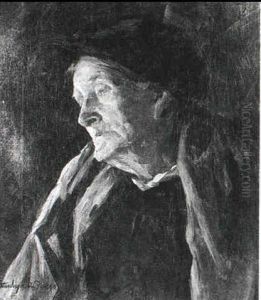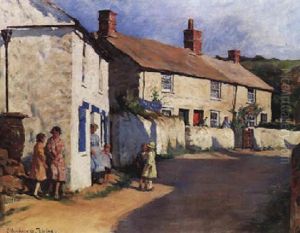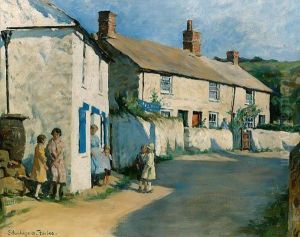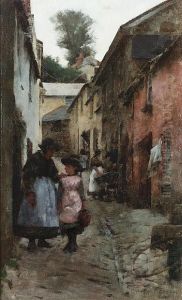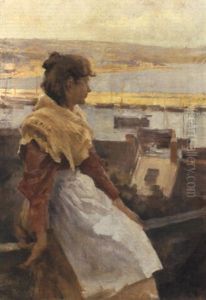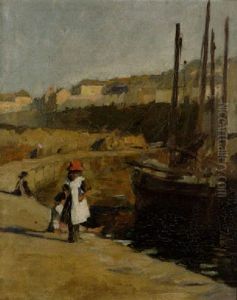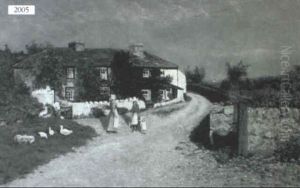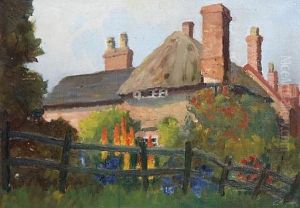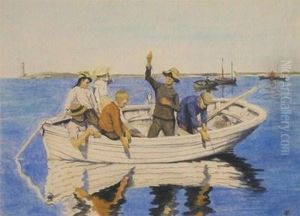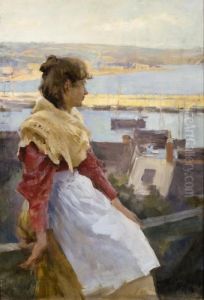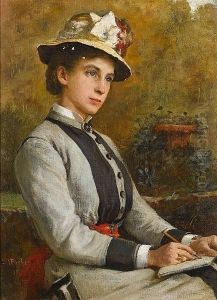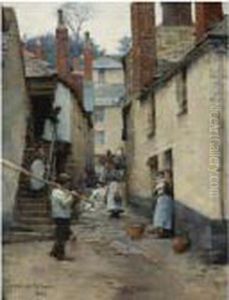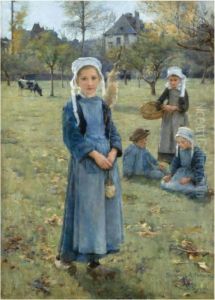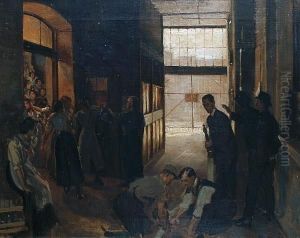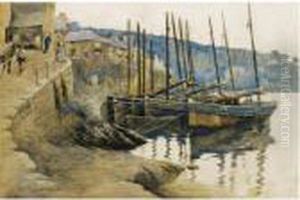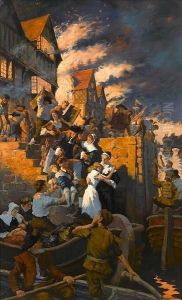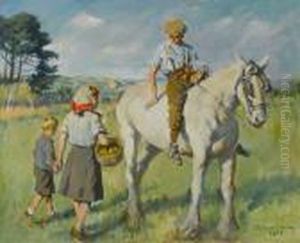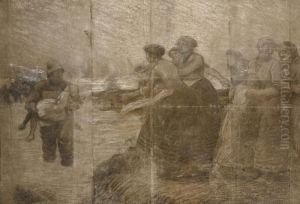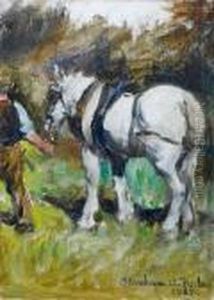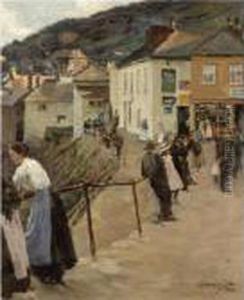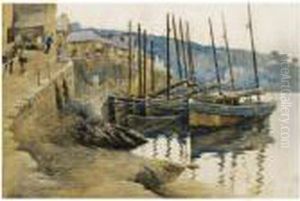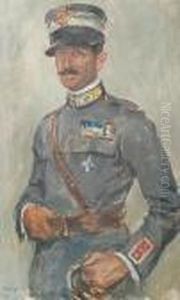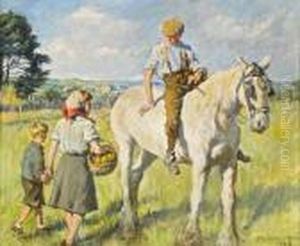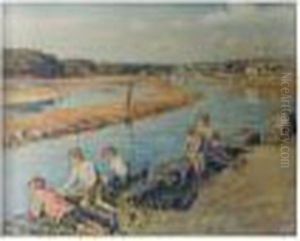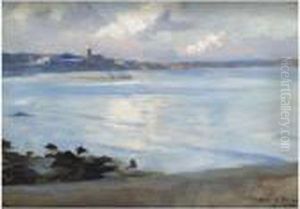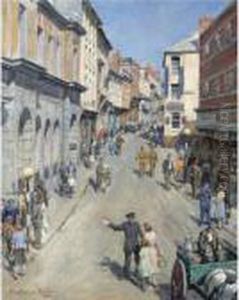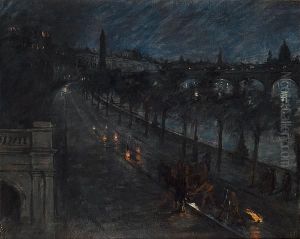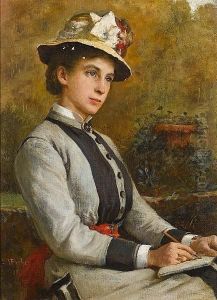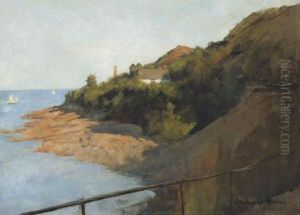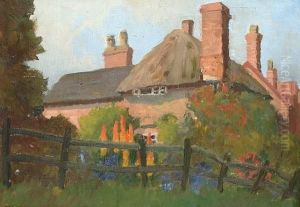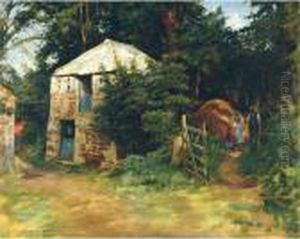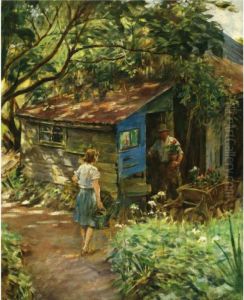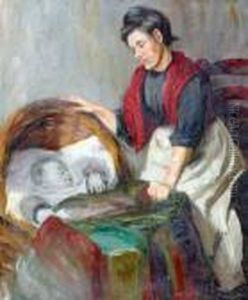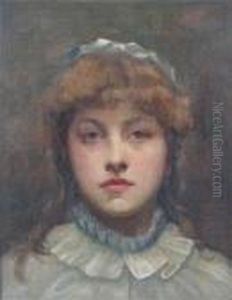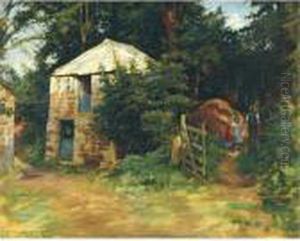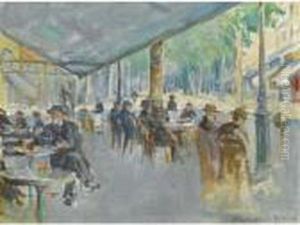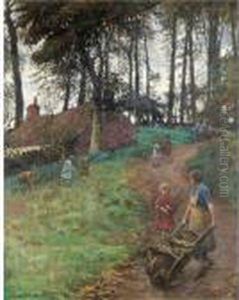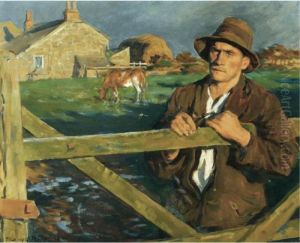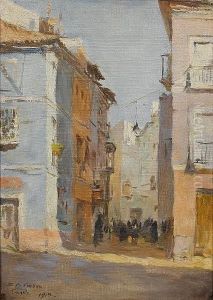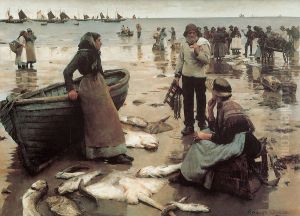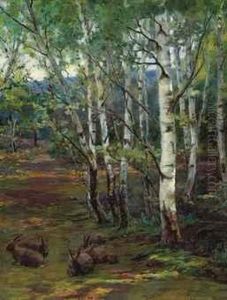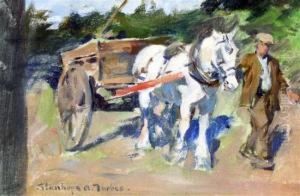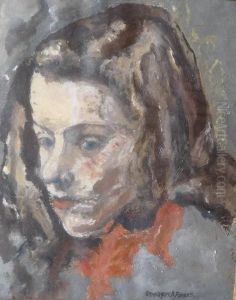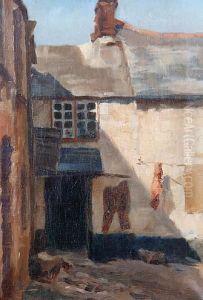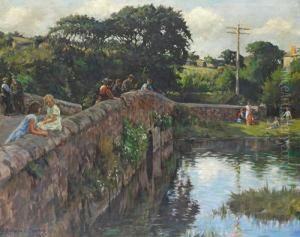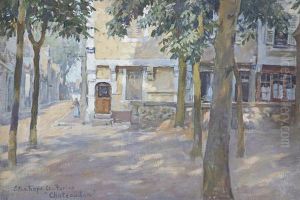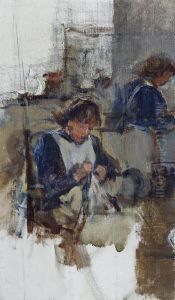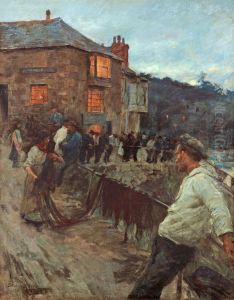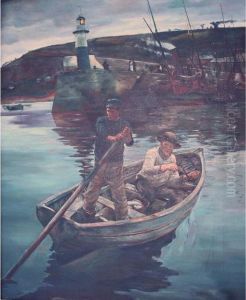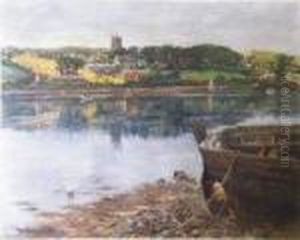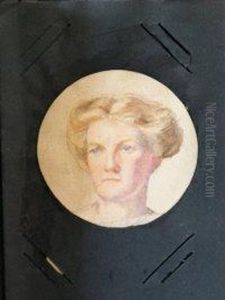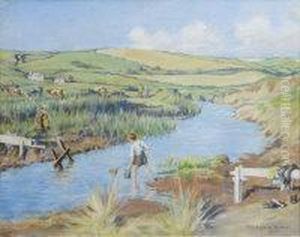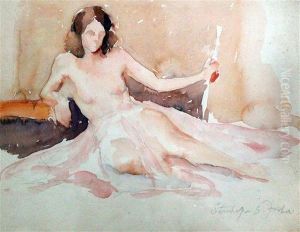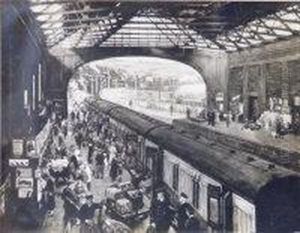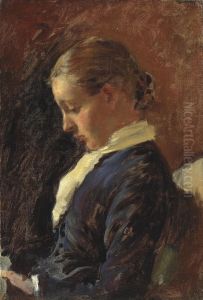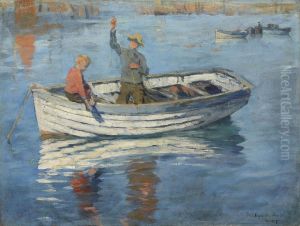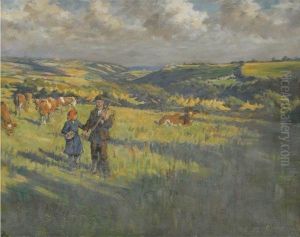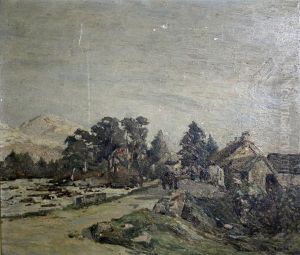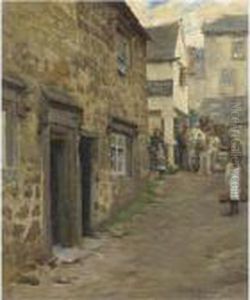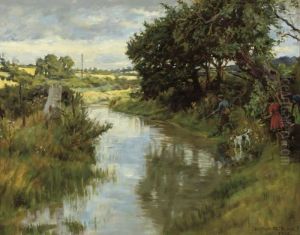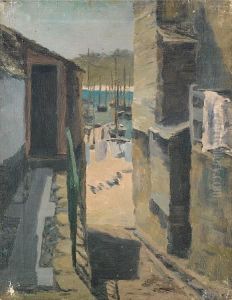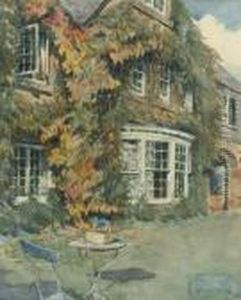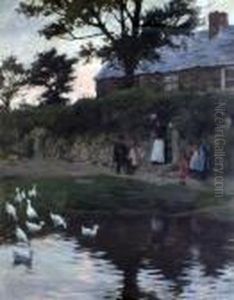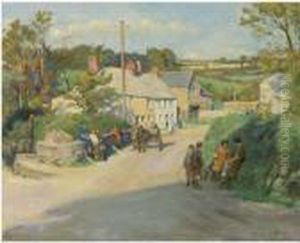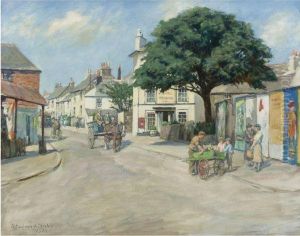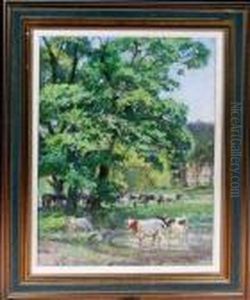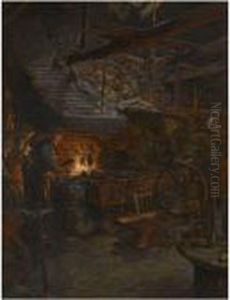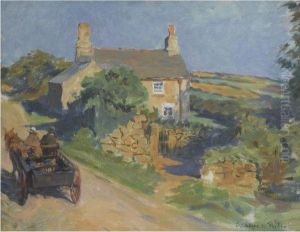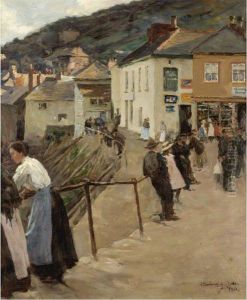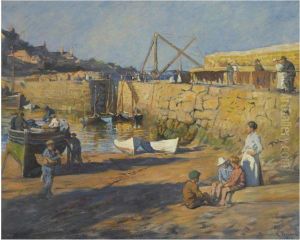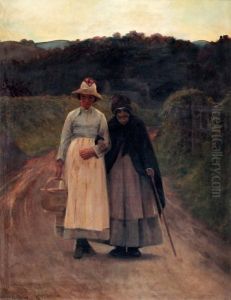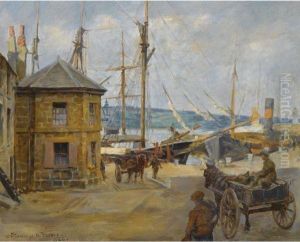Stanhope Alexander Forbes Paintings
Stanhope Alexander Forbes was born on November 18, 1857, in Dublin, Ireland, into a family with a strong military background. Despite his family's expectations, Forbes was drawn to art from a young age. He pursued his passion by studying at the Lambeth School of Art in London and later at the Royal Academy Schools. His education continued abroad in the Brittany village of Pont-Aven in France, where he was significantly influenced by the plein-air method of painting, which emphasizes outdoor scenes painted on-site.
Forbes is most famously associated with the Newlyn School, a group of artists who settled in Newlyn, a fishing village in Cornwall, England, in the late 19th century. He moved to Newlyn in 1884, drawn by the quality of light and the picturesque scenes of fishermen and their families. His work during this period focused on the daily lives of the village's inhabitants, capturing their struggles and joys with a remarkable sense of realism and empathy. One of his most notable works from this time is 'Fish Sale on a Cornish Beach,' which showcases his skill in portraying the intricate details of everyday life.
Throughout his career, Forbes remained committed to the principles of realism and naturalism, often opposing the abstract tendencies of modern art movements. His dedication to depicting British rural life earned him widespread acclaim, and he played a crucial role in establishing the Newlyn School as a significant force in British art.
In addition to his painting, Forbes was a respected teacher, co-founding the Newlyn School of Art with his wife, Elizabeth Adela Forbes, who was also a talented artist. Together, they influenced a generation of British painters, promoting rigorous training in direct observation and the plein-air technique.
Forbes's contributions to British art were recognized during his lifetime; he was elected as an Associate of the Royal Academy in 1892 and became a full Academician in 1910. His works are held in major collections worldwide, including the Tate Gallery in London and the National Gallery of Canada.
Stanhope Alexander Forbes continued to paint and teach until his death on March 2, 1947, in Newlyn. His legacy endures not only through his own works but also through the lasting impact he had on the Newlyn School and British art as a whole. Forbes's dedication to capturing the essence of British rural and coastal life with authenticity and compassion marks him as a pivotal figure in the transition of British art from the Victorian era into the 20th century.
